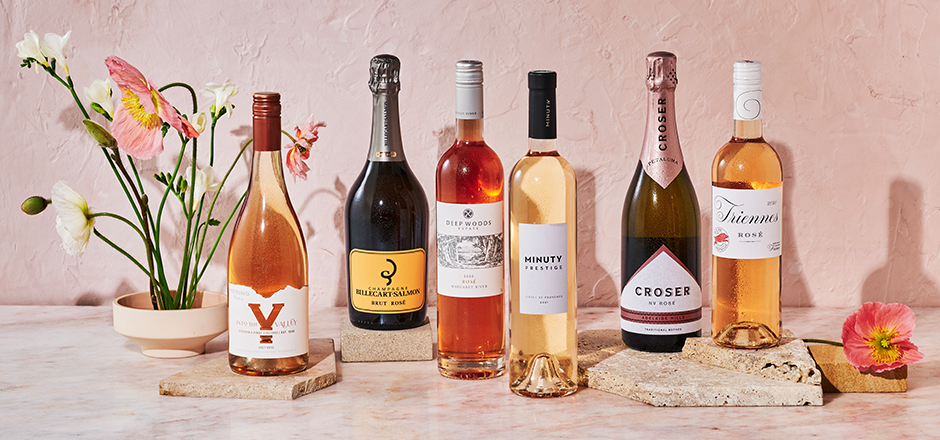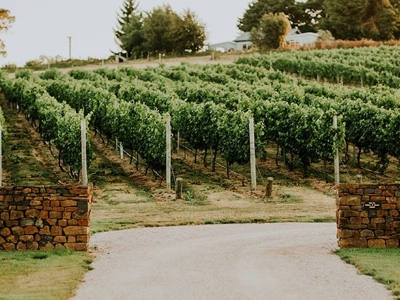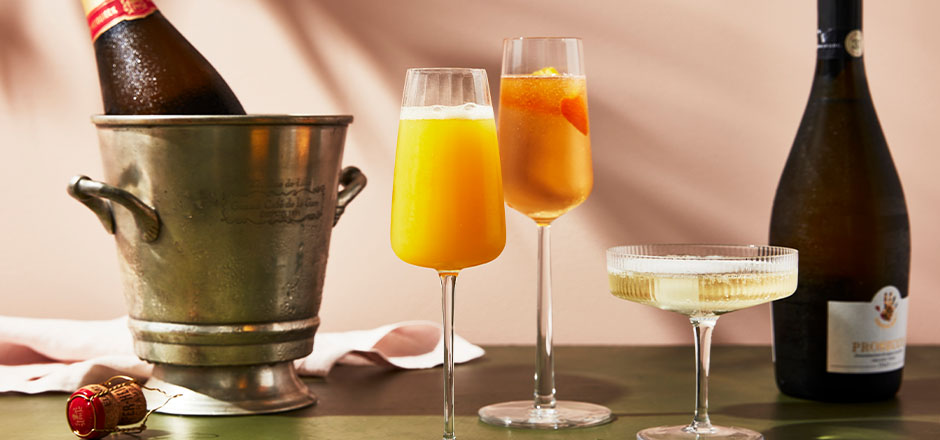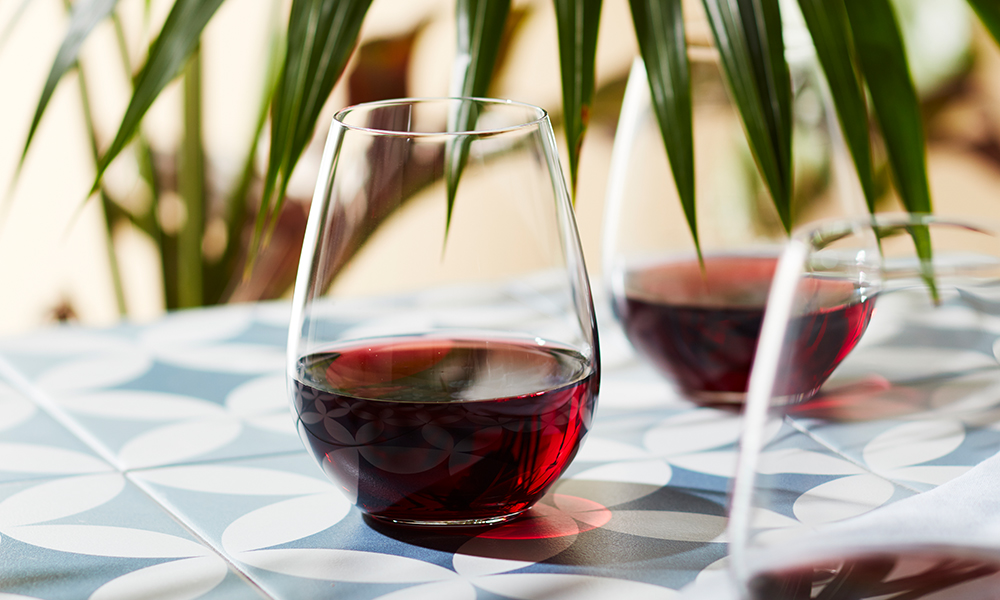- The Grape
Drink pink: A guide to rosé styles
Read Time 5 Minutes
Posted 05 Sep 2023
By Vintage Cellars

Australians drink pink all year, but when spring is in the air and summer is on the way, it’s rosé’s time to shine. Here’s what you need to know about the range.
Rosé has become hugely popular in recent years, and for good reason. It’s refreshing, easy to drink and versatile enough for any occasion. And did we mention it’s pink? Gorgeous-looking in the glass, rosé is the ultimate symbol of longer, warmer days. The world of rosé wine includes many different styles, each with its own unique flavour profile. This guide to rosé explores popular rosé styles including Provence rosé, French rosé Champagne, and great-value Australian rosé and sparkling rosé, plus food pairing suggestions and in-the-know serving tips.
What is rosé wine?
Rosé wine is made from red grapes, but the skins are only left in contact with the juice for a short period of time. This results in a wine with a glorious pink colour and a lighter body than red wine. The flavour of rosé can vary depending on the grape variety used, the length of skin contact, and the winemaking style.
Provence rosé
Provence is a region in southeastern France that is synonymous with rosé. These wines are typically made from grenache, cinsault and syrah grapes. They tend to be light in colour with fruity flavours of strawberry, watermelon and peach. Provence-style rosé is a great choice for refreshing spring and summer drinking – just add a crusty baguette and creamy wheel of brie, or a bowl of seafood pasta to share. Here are our top picks for creating the authentic Provençal experience.
Triennes Rose: Crafted with syrah, cinsault, merlot and grenache, this elegant Provence rosé has white floral and strawberry aromas with vanilla notes.
Chateau Minuty Prestige Rose: A premium Provence rosé, this is aromatic with grapefruit and blood orange and raspberry notes and a delicious crisp and slightly salty finish.

French rosé Champagne
Rosé Champagne is made with the same red and white grapes as Champagne – typically chardonnay, pinot noir and pinot meunier, but the winemaking process may include maceration with the skins (as with still rosé) or including a percentage of red wine in the blend. This means their colours vary from soft or salmon pink to raspberry or strawberry shades. They may have spicy, fruity or complex aromas and delicate, fresh or more intense flavours.
There’s not as much rosé Champagne to go round, so that adds to the premium appeal, but it’s also a versatile choice when it comes to food pairing. Yes, you can pair it with cheese, charcuterie and fresh or smoked seafood, but think beyond these and try it with steak, spring lamb cooked medium-rare and spicy, umami-rich dishes from Thai, Chinese and Japanese cuisines.
A knockout example of this sophisticated style is Billecart Salmon Brut Rose NV Champagne. From a Champagne house still run by the same family that founded it in 1818, it’s a blend of 40% chardonnay, 20% pinot meunier and 40% pinot noir with fresh pear and red fruit aromas.
Great-value Aussie rosé and sparkling rosé
Australia produces excellent pink wines, made from different varietals including shiraz, grenache, pinot noir, tempranillo and sangiovese. Look for them alongside the delicious reds, whites and sparkling produced in regions such as Margaret River, Adelaide Hills, the Barossa and the Yarra Valley. These wines are often fruit-forward with a refreshing acidity. Great-value Aussie rosé is an excellent choice when you’re after an affordable wine with that French panache. Here are three to try.
Deep Woods Estate Rosé: A finalist at our 2023 Best of Wine Awards, this rosé from Margaret River is made with shiraz, tempranillo, merlot and sangiovese. It’s a well-balanced, complex and savoury wine with notes of herbs, redcurrant, sour cherries and wild strawberries. Pair it with a rustic tuna, anchovy, olive and white bean salad.
Yering Station Into The Valley Rosé: The 2023 Best of Wine Awards Rosé winner, this Yarra Valley rosé is made using food-friendly Italian varietals nebbiolo and sangiovese. It’s crisp, dry and refreshing, with hints of peach, nectarine, sage and rose petals. Enjoy it with prawn bruschetta.
Croser Rose NV: A stylish pinot noir sparkling rosé made with fruit from the Adelaide Hills in SA, this is creamy with bursts of cherry, strawberries and pomegranate. Try it with mini goat’s cheese tarts or prosciutto wrapped melon wedges.
How to serve rosé
It’s best to serve rosé chilled, but not too cold. The ideal temperature is around 11-12 degrees. When choosing your glassware, remember that stemmed glasses will help to preserve the wine’s delicate aromas.
For a change from straight rosé, why not serve up pink wine based spritz – it’s a light, refreshing cocktail that’s perfect for the party season. To make one, fill a glass with ice and add 2 parts rosé, 1 part soda water and a splash of cranberry juice, then garnish with a lemon wedge. It’s great for those warm days when your entertaining stretches from lunch to dinner – you could start with a refreshing rosé spritz and still be celebrating with French bubbles as the sun goes down.
Products featured are available from 06/09/23 to 10/10/23, while stocks last. Some products or varieties featured may not be available in all stores.
- The Grape
- View More Posts The Grape








